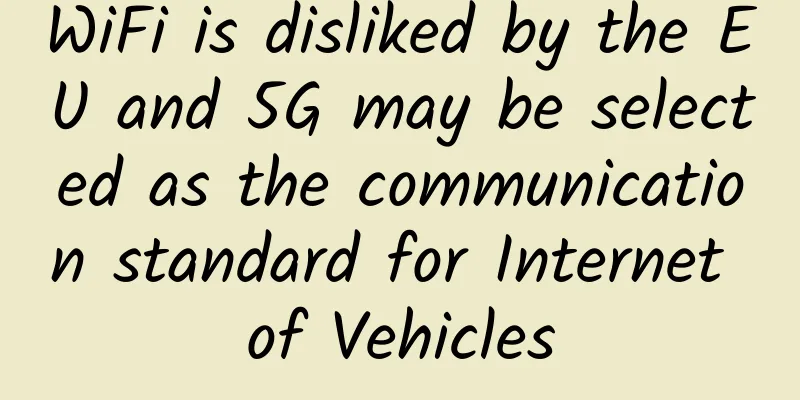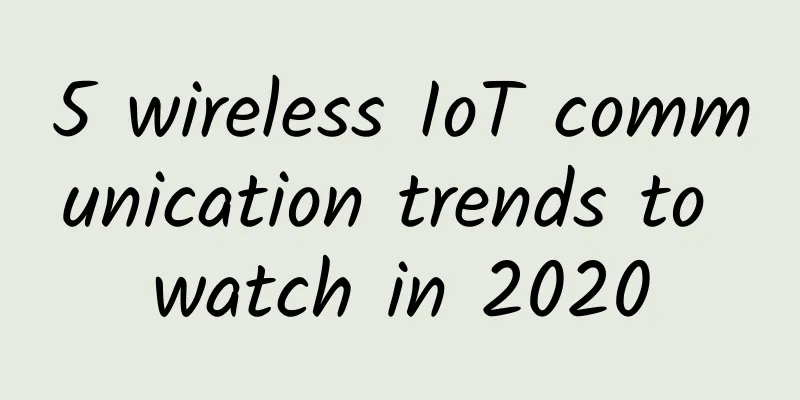WiFi is disliked by the EU and 5G may be selected as the communication standard for Internet of Vehicles

|
EU member states recently voted on a plan to adopt Wi-Fi as the future vehicle networking communication standard. 21 EU countries voted against it - this is the vast majority of the 28 EU member states.
The plan for this vote proposed that short-range Wi-Fi be used as the communication standard for future vehicle networking technology, and that 5G cellular network connections be prohibited. This plan was rejected by most member states, which actually paved the way for 5G to become the EU's future vehicle networking communication standard. For years, the automotive industry has been divided over whether to use Wi-Fi or 5G for car networking technology. General Motors, NXP, Toyota, Volkswagen and Volvo support Wi-Fi, while BMW, Daimler, Ford, Huawei, Intel, Qualcomm and Samsung support 5G. Whether using Wi-Fi or 5G, the basic concept of V2X (vehicle-to-everything) remains the same: cars exchange information with the outside world, such as other cars and local infrastructure (roads, traffic lights, and control systems), to achieve safe coordination and have full autonomy. For quite a long time, the Wi-Fi camp has certain advantages due to its low latency and mature technology. In contrast, cellular network technology lags far behind. However, this situation will be broken after the popularization of 5G. 5G is not only comparable to Wi-Fi in latency, but also provides more technical advantages. Generally speaking, the Wi-Fi standard used in vehicles is 802.11p, which uses a low-bandwidth 5.9GHz radio channel to transmit data at a speed of 3-27Mbps within a distance of 150 meters to 1 kilometer, and the maximum speed of the transmitting vehicle can reach 260 kilometers per hour. Due to many practical factors, the actual transmission distance and data bandwidth of Wi-Fi may be at the lower end of these ranges. One of the main reasons why the EU proposed using Wi-Fi as the communication technology for the Internet of Vehicles is that the Wi-Fi camp believes that it has already been deployed in 2016, while 5G is not. Although the Wi-Fi standard has been proposed for many years, its development has not been smooth. Except for some deployments in Japan, there is no commercial system in the world so far. But 5G is different. Currently, many countries around the world have launched 5G networks, and 5G popularization is just around the corner. Compared with Wi-Fi, 5G can not only provide larger upload bandwidth and lower downlink latency, but in theory, 5G C-V2X will support lossless data transmission between vehicles at a maximum speed of 500 kilometers per hour, even at a distance of more than 450 meters, and will also benefit from numerous 5G base stations. The report said that given the dominant position and performance of 5G, European companies have recently begun to worry about investing in "soon-to-be-obsolete" Wi-Fi technology. |
<<: Why does TCP use the "three-way handshake" to establish a connection? An example will teach you
>>: Top 9 bandwidth monitoring tools for enterprise networks
Recommend
What can 5G messaging bring to industry customers?
5G messaging is planned and built based on the GS...
ZJI: New Year limited 50% off Hong Kong server 500 yuan/month-2*E5-2630L/32G memory/1TB SSD/20M bandwidth
ZJI has just launched a new year promotion, offer...
Say goodbye to manual operations! Use Ansible user module to efficiently manage Linux accounts
In an enterprise operation and maintenance enviro...
RAKsmart: VPS/cloud server from $19.9/year ($0.99/first month), 1Gbps unlimited traffic server from $89/month, multiple data centers available in the United States/Hong Kong, etc.
RAKsmart continued to launch a number of activiti...
Megalayer: US servers start at 199 yuan/month, US 100G high-defense servers start at 299 yuan/month
Megalayer's promotion this month still offers...
5G and IoT bring big data boom
When interest in Hadoop began a few years ago, WA...
Learn about the last of the four types of switch messages in one minute: known unicast
Continuing from the previous article "Learn ...
2024 Communications Conference | Towards a new era of smart distribution network construction, Ruijie Networks releases dual-plane distribution communication solution
Recently , the 2024 Energy Network Communication ...
Bluetooth 5 and its role in the Internet of Things
What is Bluetooth 5? If you own a car or a smartp...
Are you afraid of pressing Enter? 13 Junos tips to help you configure your network easily and without worries
[[203887]]...
Sharktech 20th Anniversary Cloud Server 20% off, Netherlands/Denver/Los Angeles High Defense Private Cloud/Public Cloud Server
Sharktech is currently carrying out a 20th annive...
Huawei Cloud 12.12 Membership Festival invites you to join the carnival. In the 5G era, Huawei Cloud is the right choice!
[51CTO.com original article] Guess what the first...
CDN enters the licensing era, and the Ministry of Industry and Information Technology regulates and cleans up the CDN market
On December 12, the Ministry of Industry and Info...
80VPS: Hong Kong dedicated server 100M bandwidth 450 yuan/month, US CN2 server 350 yuan/month
80VPS is promoting some independent servers. For ...
SpaceX executive says Starlink can expand service to 30 million Americans
SpaceX's satellite internet service, Starlink...









